Bridging Three Centuries of Iconic Masonry: How BAC Local 1 NY’s work on the Brooklyn Bridge restored an American landmark
To any New Yorker alive today, the idea that you’d have to jump on a ferry to commute from Brooklyn to Manhattan seems absurd. But in the 1880s, that was the reality. Back then, Brooklyn was the third-largest city in the country, still not part of New York City, and the only way to get across the East River was by boat.
The Brooklyn Bridge changed all that, reimagining New York — and America — in the process. Since its dedication in 1883, its magnificent gothic stone towers and crisscrossing cables have carried billions of people across the East River, firmly unifying Brooklyn with Manhattan. In the process the Brooklyn Bridge became one of the most culturally iconic structures in New York, the US, and the world.
However, even icons fade over time as they are exposed to weather and traffic. So, in 2019, a $300 million restoration project on the bridge commenced, giving BAC Local 1 NY members a once-in-a-lifetime chance to build the next chapter in the history of “America’s Eiffel Tower.”
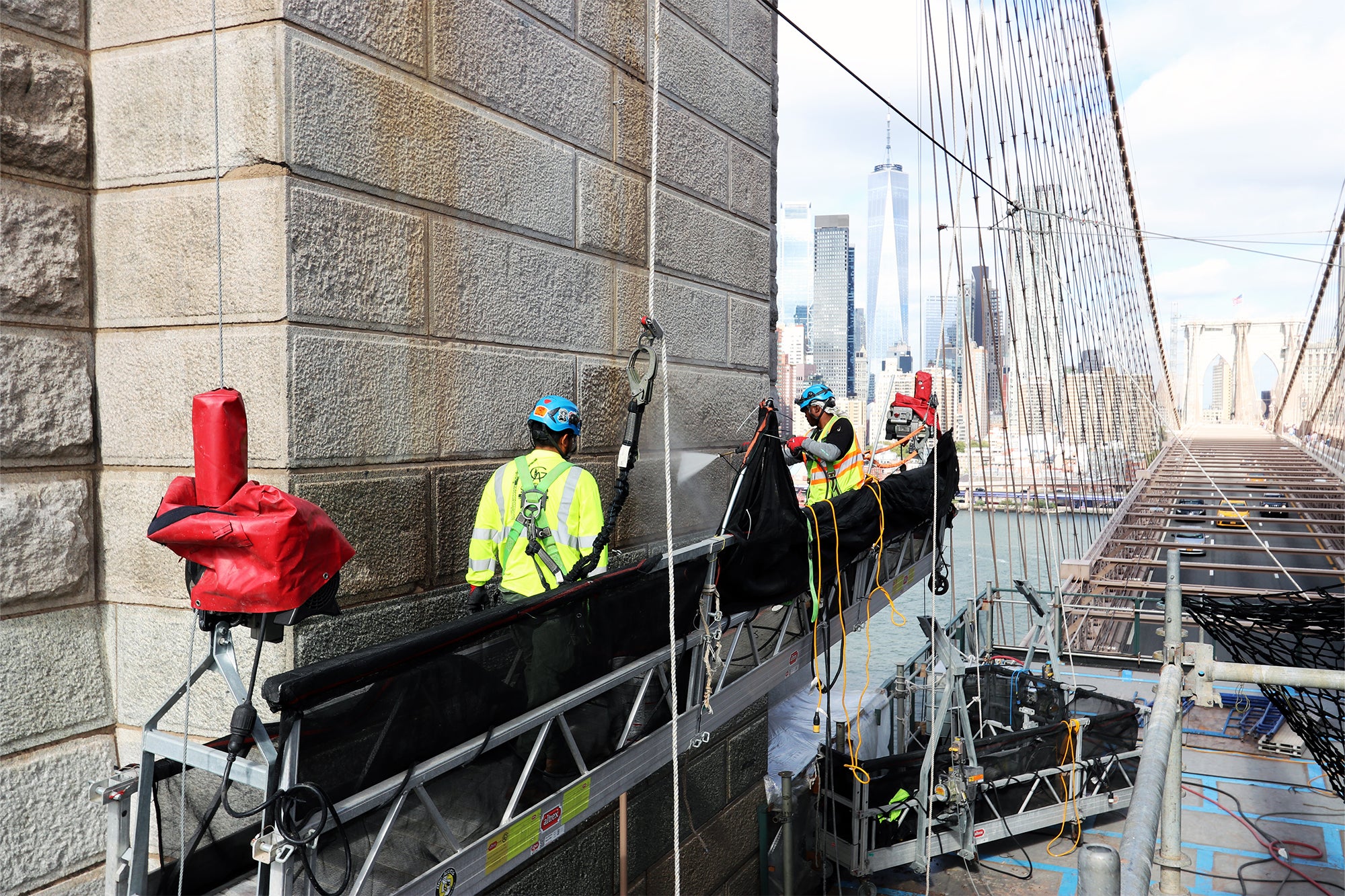
CLEANED UP AND STRENGTHENED
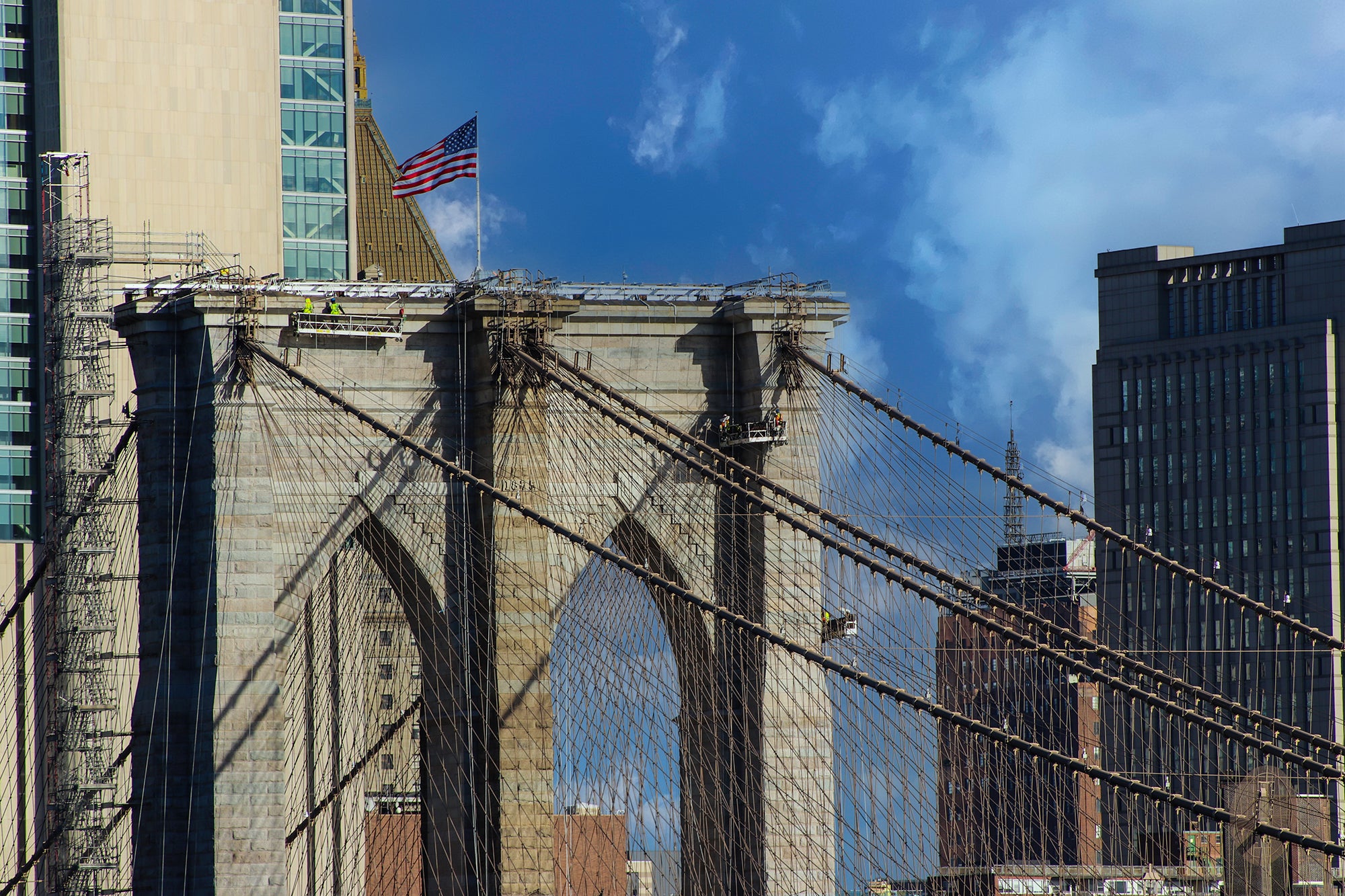
Indeed, BAC members and contractors were essential to the massive renovation, which required detailed cleaning, inspection and repair of the granite slabs located on each tower of the bridge. To access the façade, BAC workers used standard suspended access equipment complemented with specially designed rigging accessories and special support beams secured to the existing tower structure. PULLMAN SST, Inc., an industry-leading repair and maintenance contractor undertaking these repairs, worked with Rigging Consultant Inc. and PCS Engineering to create a custom designed rigging layout plan for providing complete access to each tower.
Over 300 BAC members worked on the project during its four and a half year timeline, totaling approximately 300,000 workhours. The scale was enormous, with over 145,000 square feet of granite/limestone repointing and 82,000 square feet of brick repointing. Tens of thousands of bricks were replaced, and 510,000 square feet of granite was cleaned on the bridge’s iconic towers and approaches. Pullman installed Cintec grout sock anchors at multiple cracked granite locations for structural strengthening, so it can be structurally sound for another 100 years.
The scope of work included also 17,000 square feet of Compatible Injected Fill (CIF). This scope of work involved pinning with helical ties and injecting a proprietary natural cement grout into voids at the interior brick walls of the arch blocks. Local 1 NY members received additional training by the manufacturer and now have jurisdiction for this emerging technology.
ONCE IN A LIFETIME EXPERIENCE
One of the BAC members leading the charge was foreman Axel Morales. A 24-year BAC veteran, Morales has worked on prominent New York City landmarks including the Federal Reserve Bank, Rockefeller Center, and the Chrysler Building — but, as Morales says, the Brooklyn Bridge is in a class by itself.
“It was really something to work on this with my BAC brothers and sisters—to be able to share this incredible experience with them,” Morales said. “When you go inside these magnificent arched blocks and promenades, and into the towers, it’s just so amazing. It is unbelievable that it was built 140 years ago.”
“I have read about the Brooklyn Bridge ever since I was in the third grade, so to be able to be a part of working on it, helping restore it for future generations, was just so special,” Morales continued. “This is an iconic structure, so the experience has taken my breath away. It truly is one of the highlights of my career.”
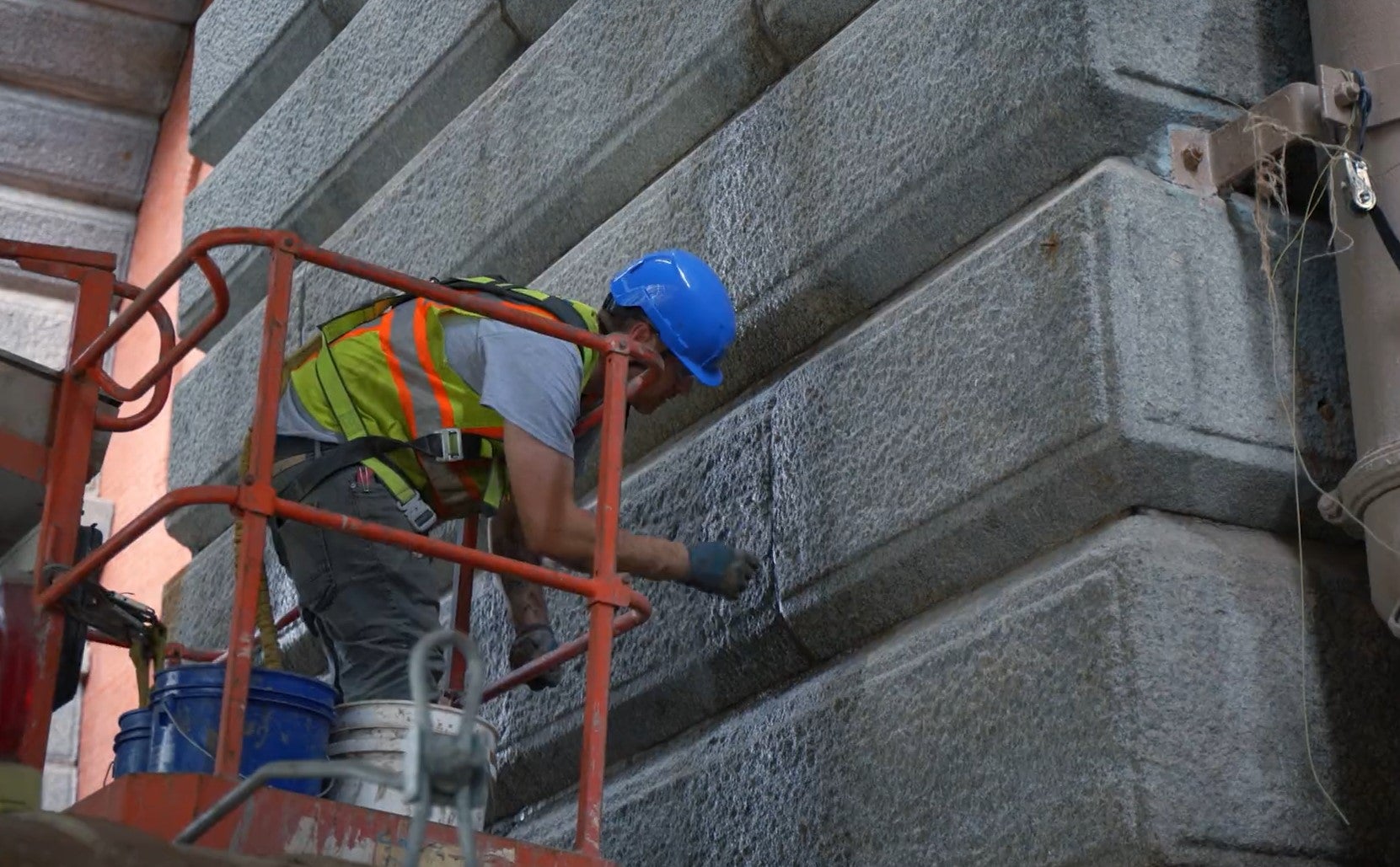 During two years of working on the Brooklyn Bridge project, Morales helped oversee BAC’s work in areas like specialized cleaning and restoring of the bridge’s granite surfaces—work he says BAC members are uniquely trained to accomplish. “These are the kind of specialized restoration techniques and skills that go way beyond the basics. We are true restoration specialists who have undergone extensive training and education through the BAC to handle intricate projects like this.
During two years of working on the Brooklyn Bridge project, Morales helped oversee BAC’s work in areas like specialized cleaning and restoring of the bridge’s granite surfaces—work he says BAC members are uniquely trained to accomplish. “These are the kind of specialized restoration techniques and skills that go way beyond the basics. We are true restoration specialists who have undergone extensive training and education through the BAC to handle intricate projects like this.
HISTORIC PRESERVATION
PCC Mechanic Priscilla Rocco, a 17-year BAC veteran, is an example of how BAC’s training prepared members to execute any project at an elite level. Before coming to work on the bridge, she took an IMI historic preservation course to gain insight into the dynamics of working with and treating historic stone materials. Not long after she began restoring the stone high above the East River, Rocco was promoted to Foreman, where she oversaw night shift work on the exterior granite.
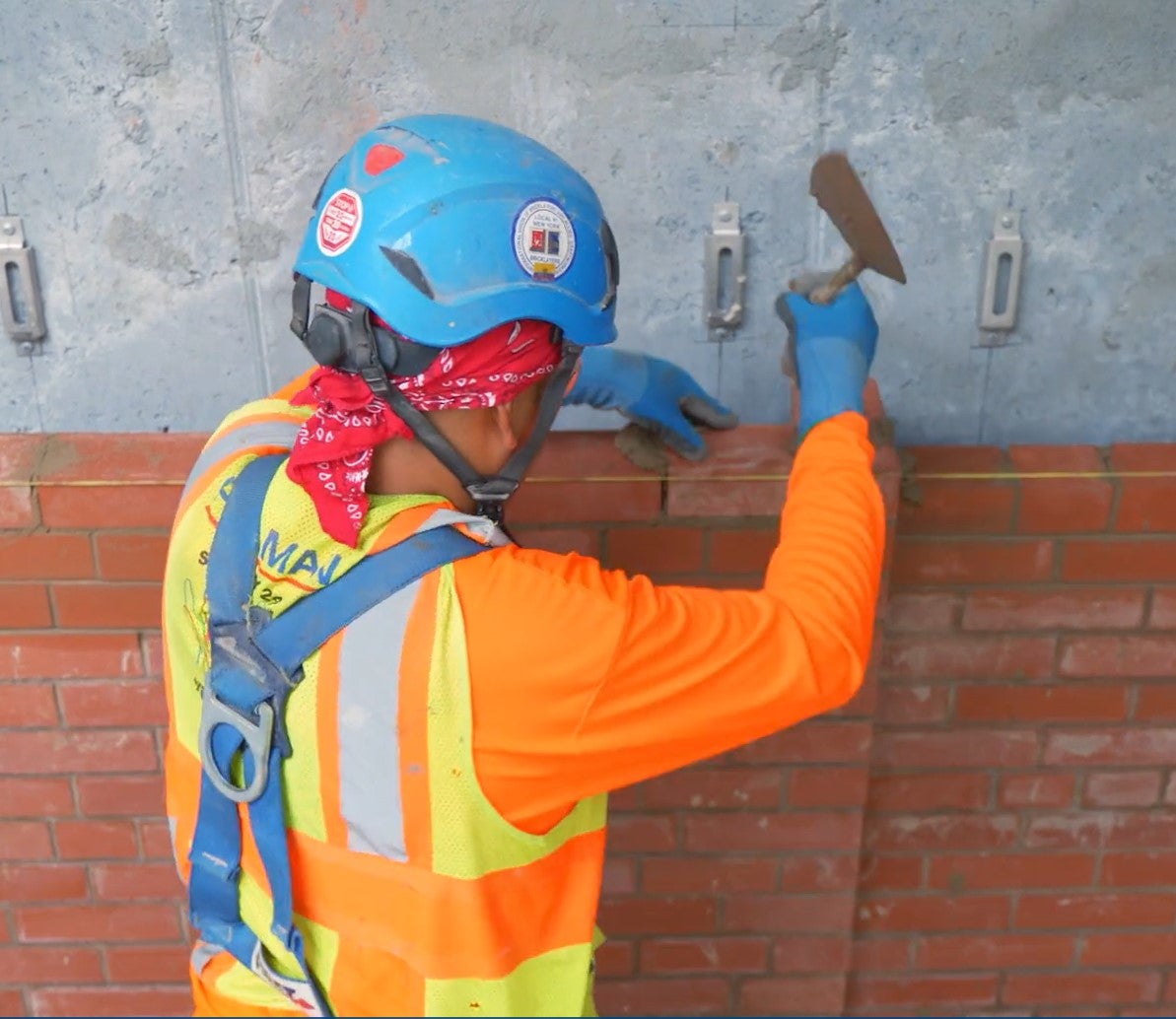 Rocco and her team used specialized tools such as hammer drills and micro-abrasive cleaning systems (like IBEX) and traditional chemical cleaning methods, which are used instead of grinders to avoid harming the stone. “Working on such an iconic structure required making sure our team was extra careful and delicate with the historic materials,” Rocco explained. “Granite is one of the trickiest stones to work with, so we had to take great care in the means and methods we used to not to damage it. BAC members were given lot of unique responsibilities, which allowed us to utilize skills that we were specially trained for.”
Rocco and her team used specialized tools such as hammer drills and micro-abrasive cleaning systems (like IBEX) and traditional chemical cleaning methods, which are used instead of grinders to avoid harming the stone. “Working on such an iconic structure required making sure our team was extra careful and delicate with the historic materials,” Rocco explained. “Granite is one of the trickiest stones to work with, so we had to take great care in the means and methods we used to not to damage it. BAC members were given lot of unique responsibilities, which allowed us to utilize skills that we were specially trained for.”

After two years on the job, Rocco says the experience — and her promotion to Foreperson — was one of the biggest highlights of her career. “When they promoted me, it showed the confidence they had in me and the work I have put into my craft. It felt great to know they knew I could be a leader. Being able to work on projects like this, and working for a union and company that place a priority on its workers’ safety, is special to be a part of.”
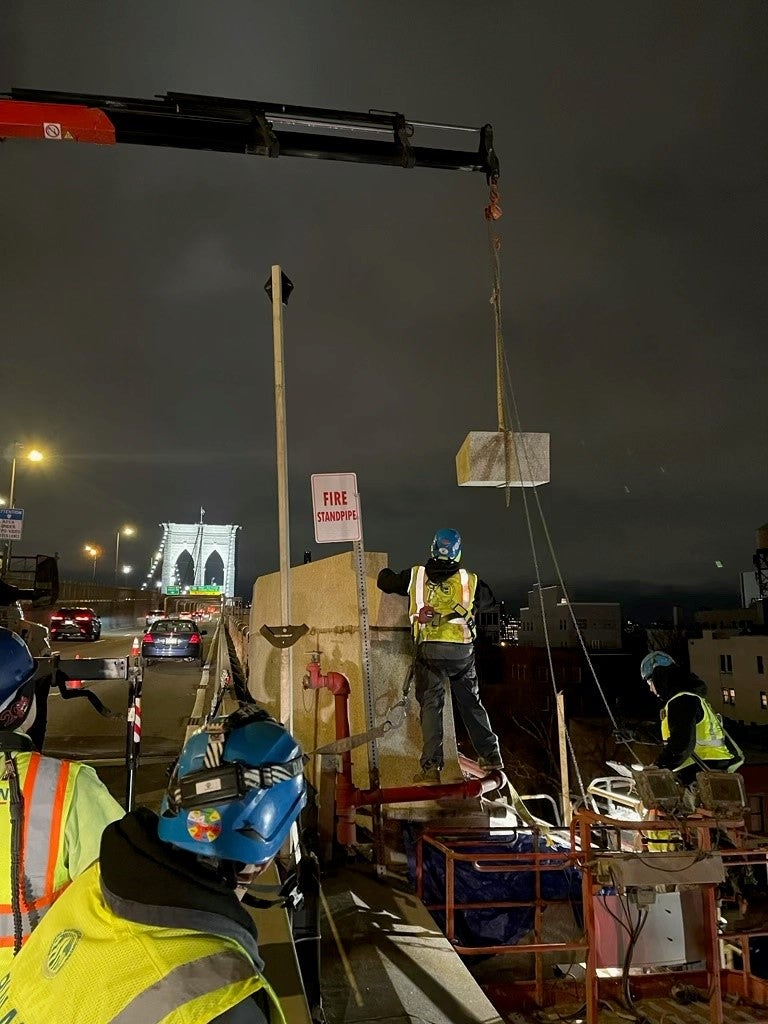 And there’s also the bragging rights. “When you look at what we are doing, I mean, how many people get to say they worked on the Brooklyn Bridge? How many people get to say they were part of helping restore one of the most iconic bridges in New York, in the whole country?”
And there’s also the bragging rights. “When you look at what we are doing, I mean, how many people get to say they worked on the Brooklyn Bridge? How many people get to say they were part of helping restore one of the most iconic bridges in New York, in the whole country?”
A DREAM JOB
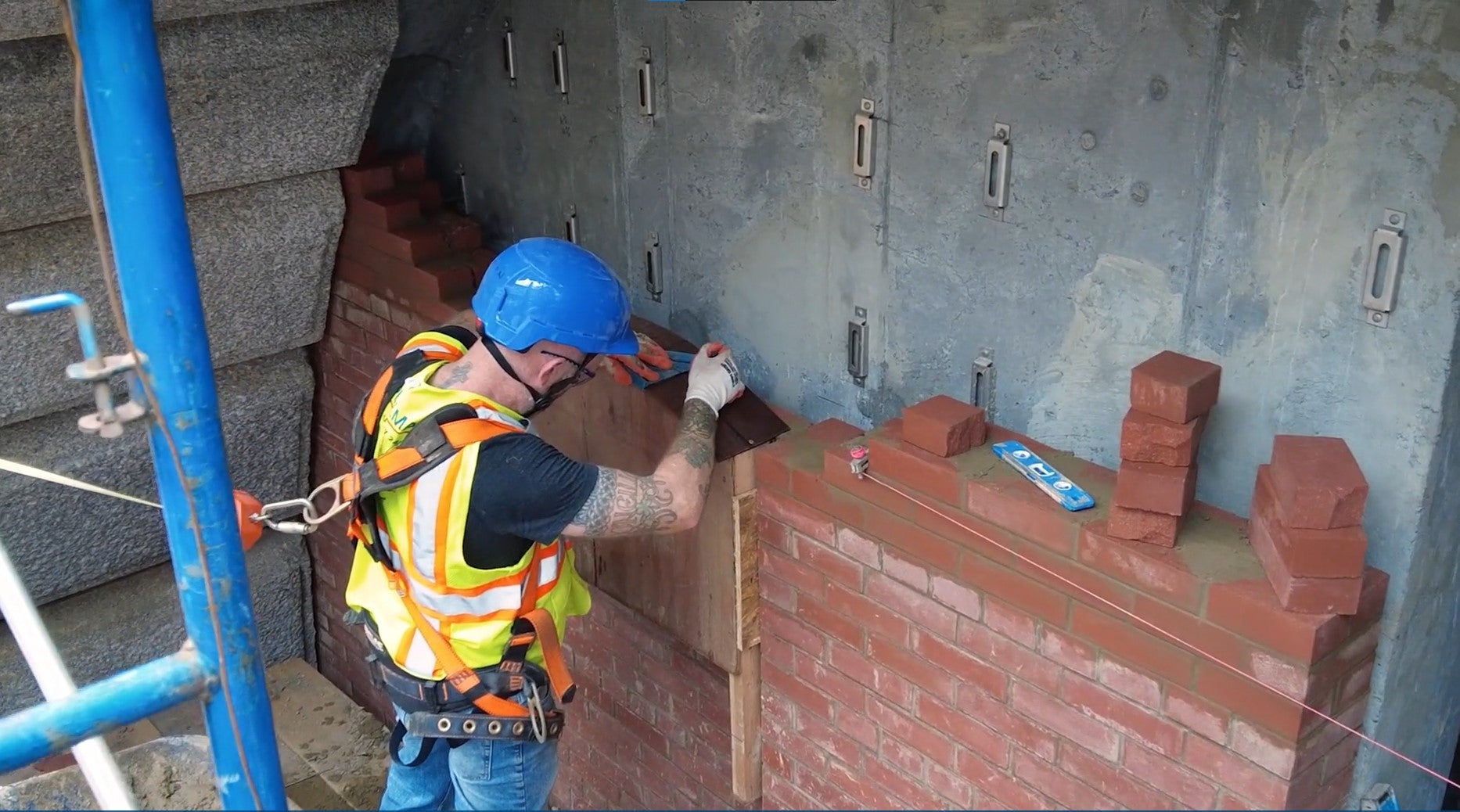 For Local 1 NY apprentice Tiffany Mendez, the job was an unbelievable introduction to the world of restoration. As a child growing up on the Lower East Side with a passion for building, she remembers passing the Brooklyn Bridge and marveling at its size and grandeur. It seems fitting, if incredibly fortunate, that working on the bridge as part of Morales and Rocco’s crew would be her first BAC job.
For Local 1 NY apprentice Tiffany Mendez, the job was an unbelievable introduction to the world of restoration. As a child growing up on the Lower East Side with a passion for building, she remembers passing the Brooklyn Bridge and marveling at its size and grandeur. It seems fitting, if incredibly fortunate, that working on the bridge as part of Morales and Rocco’s crew would be her first BAC job.
“The whole experience is really touching home for me personally,” Mendez says. “Being able to do this kind of work has been my calling since I was younger. Every time I would pass by a structure, I felt like it was calling me back. I always wanted to see what was on the other side of those walls—and now I’m here.”
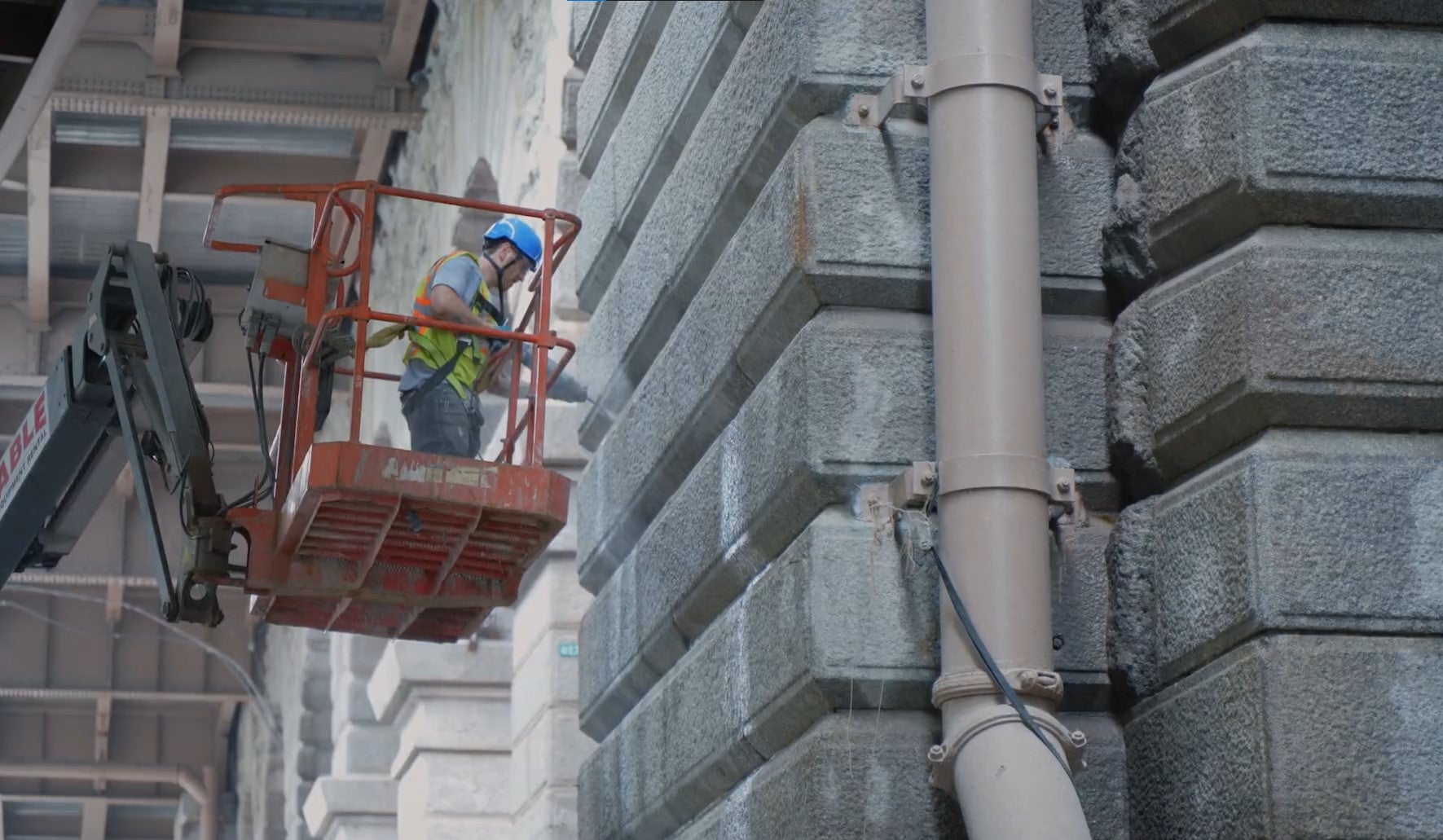 One of the benefits of her time on the job is getting hands-on guidance from her more experienced BAC brothers and sisters. “They have been more than willing to share their knowledge of what it takes to make the work count,” Mendez says. “I started out doing commercial cleaning before I joined BAC. I put wanting to do this kind of work into the universe and this is where the journey took me. And to start off by getting to work on the Brooklyn Bridge? It’s a dream job.”
One of the benefits of her time on the job is getting hands-on guidance from her more experienced BAC brothers and sisters. “They have been more than willing to share their knowledge of what it takes to make the work count,” Mendez says. “I started out doing commercial cleaning before I joined BAC. I put wanting to do this kind of work into the universe and this is where the journey took me. And to start off by getting to work on the Brooklyn Bridge? It’s a dream job.”
“This project is a source of pride for every member who had hours on it. There are a lot of magnificent buildings throughout New York City, but few are known worldwide like the Brooklyn Bridge,” said BAC Local 1 New York President Jack Argila. “The techniques used to restore it to its historic glory needed skilled craftworkers to apply, and there are none better than BAC members.”
 HAIL TO THE BRIDGE
HAIL TO THE BRIDGE
On May 24, 1883, the Brooklyn Bridge opened to the public after 14 long and difficult years. Many believed the project was physically impossible. 1,595 feet and $15 million later, the largest suspension bridge in the world (at the time) finally connected New York City and Brooklyn.
Thousands of New Yorkers and residents turned out to celebrate the opening of what was dubbed the “eighth wonder of the world.” Celebrated by colorful flags and bunting hung from the windows and rooftops of the city, the Seventh Regiment led President Chester Arthur in his ceremonial walk over the bridge.
As “Hail to the Chief” played, the procession paused at the first great granite tower on New York’s side, where it eventually headed to the Brooklyn-side of the tower to the sounds of cannons, bells and steam whistles. President Arthur was treated to his personal anthem another seven times before christening the bridge for the ages.
